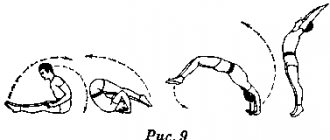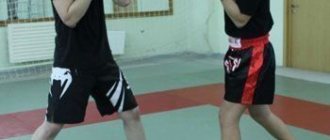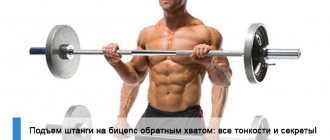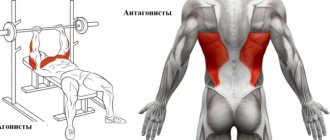Difference between KSU and Burpee
In short, the difference is in the execution mode.
The CSU, which is performed as a test, is done for a time:
- first you do one exercise for 30 seconds
- then 30 seconds another
- then 30 seconds - third
In the female version of the test, 2 exercises are usually used.
In everyday training, KSU is done in the form of a circular sequence. Approach one exercise, then a second, then a third. A little rest and a new circle.
In burpees, each movement is done once and then repeated. For example:
- did one push-up
- then, pulling his knees to his chest, he jumped out
- clapping your hands above your head
- and then you repeat it all over again
Strength complex exercise for men
Amend the order of the Ministry of Emergency Situations of Russia dated March 30, 2011 No. 153 “On approval of the Manual on physical training of personnel of the federal fire service” (registered with the Ministry of Justice of the Russian Federation on May 3, 2011, registration No. 20630) according to the appendix.
Registered with the Ministry of Justice of the Russian Federation on August 23, 2020 Registration No. 43351
Appendix to the order of the Ministry of Emergency Situations of Russia dated July 26, 2020 No. 402
Changes made to the order of the Ministry of Emergency Situations of Russia dated March 30, 2011 No. 153
Introduce the following changes into the order of the Ministry of Emergency Situations of Russia dated March 30, 2011 No. 153 “On approval of the Manual on physical training of personnel of the federal fire service” (registered with the Ministry of Justice of the Russian Federation on May 3, 2011, registration No. 20630) (hereinafter referred to as the order):
Transitions between exercises
This is a really important point!
Let’s take the “LUNGES” exercise as an example. What's the best way to do it?
Some will say that you need to alternately step forward or backward while holding weights in your hands. But every time we step forward, we have to re-tune ourselves to how we place our feet, how we maintain balance, etc.
But the main goal of the exercise is not to train balance and coordination, but to work on the muscles of the buttocks and the front of the thigh.
Don’t you think it would be more rational to eliminate these “searches for balance” that will have to be done with every step?
Wouldn't it be more rational to do the exercise differently?
- step forward, for example, with your right foot
- assume a stable position
- do the planned number of repetitions on the right leg
- step back and now step forward with your left foot
- do the planned number of repetitions on your left leg
- step back - the exercise is over
Now let’s transfer this analogy to burpees.
How is a burpee usually done? Not at all with such an ideal technique as shown in this picture.
Watch any video on YouTube:
- one push-up in partial amplitude and with a “floating” pelvis and body
- then a sluggish jump with a hunched thoracic spine and a look at the floor
- and as a result, a sluggish clap of hands above the head with such force that even a mosquito cannot be killed
Why not break down the “burpees” into separate exercises and do a set of normal push-ups, then immediately a set of squats, then “jumping jacks”?
The result will be the same KSU.
How will such a load on the Cardiovascular System differ from “burpees”?
Will strength endurance develop less?
Questions from a series of rhetorical
Only we make this sequence of exercises safer for our joints and ligaments from a technical point of view, and more rational for the heart.
We did a set of one exercise, switched to the second, then to the third.
Instead of jumping through each repetition to a new exercise.
Tilts to the side
This exercise targets the external obliques. With good training with additional weights, they become noticeable, but for this you will need to go on a diet to remove the excess layer of fat (if any).
Attention! Bendovers by themselves do not burn belly fat. Without a diet, you will only increase your waist if you lean on this exercise, because the muscles will grow, but the thickness of the fat layer will remain unchanged.
Technique:
- The legs are spaced shoulder-width apart, the hands are on the belt or one on the belt and the other behind the head.
- Shoulders are straightened, hips are fixed, the lower back does not bend.
- Bend to the right, perform 10-15 repetitions. The tilt is carried out with a tense press.
- Perform 10-15 repetitions on the other side.
If bending is difficult, you can do it with slightly bent legs.
The exercise cycle begins with 10-15 repetitions of bending, 3 sets each. Over time, their number can be gradually increased. If it is necessary to increase the load, bending to the sides is performed with dumbbells in your hands.
© Mihai Blanaru — stock.adobe.com
CSU in law enforcement agencies
CSF is just one of the strength endurance tests that is used in various military and paramilitary units.
To be honest, when we did the CSU during an internship at the Training Center of the Ministry of Internal Affairs, the teachers usually did not pay much attention to the technique.
Well, they kicked me a little if my butt rose too much during push-ups.
We also did this in Soviet armored vehicles. And in helmets.
The photo is from 2001 and it only shows the 5th lap. This is the “Siberian Workout”











